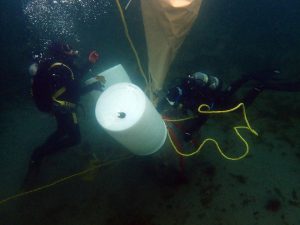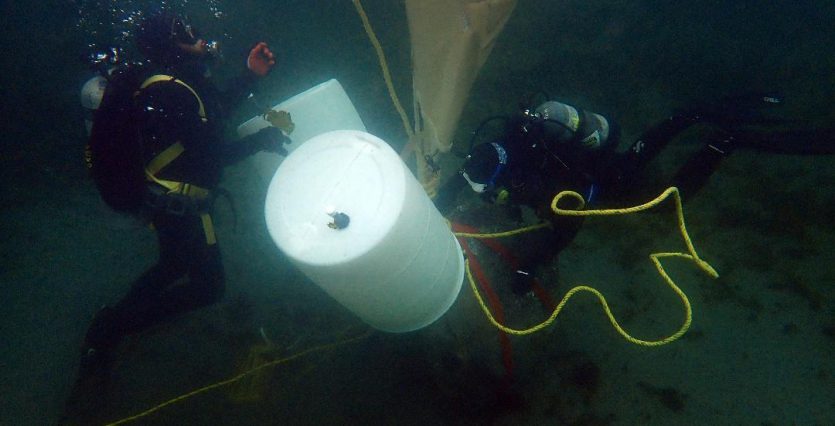The Green Diver Initiative includes stewardship in its goals. But what does stewardship mean for a diver?
Stewardship is supporting the needs of a dive site, particularly the aquatic environment. My interpretation of stewardship comes from a long history of supporting an Underwater Park. All diving sites have needs, some of which are best accomplished by divers actually diving to provide the hands-on support the dive site needs to allow for fun and enjoyable diving.
I am often asked why a diver would want to step up and become a diving steward. My answer may not the most appealing, but it is simple in that as a steward you now have a seat at the table for decisions about the site and implementation. The dive site manager has skin in the game as they are responsible for the site. This leads to concern on how the site is used and perceived. Divers often comment “if only…” some change was made to a dive site then it might be more enjoyable, have richer aquatic life, or some other factor. But those wishes do not get very far when the person making the wish never follows through with action to implement their desires. However, when a diver becomes a steward, they get to hear the background for existing decisions and features, as well as being able to contribute to the site betterment. By paying it forward, the diving steward is now empowered to suggest changes or improvements.
At the Edmonds Underwater Park, our approach to stewardship has been to sculpt a site to the scuba community’s needs by having a seat at the table and making the aquatic setting a popular and enjoyable recreation site. Our effort has been to invest our energy as stewards on the City’s behalf, which in our case manages the Park. The seat at the table comes with trust which is earned by following up on our commitments and accomplishing the agreed upon actions. We are paying it forward as volunteer divers, with the charity being the City. We have skin in the game since we are diving to implement our joint values.

Photo by: Matthew Shawhan
This is not a free-for-all where we get to do what ever we desire. For our efforts we have an agreement as to how we chart our course and how we prioritize our actions. This keeps us in sync with the City’s wishes, but also aligned with our needs as divers. There are the constraints within which both the City’s and divers’ expectations can be formed. Divers in general are trying to recreate, but scuba can be an effective method for getting chores accomplished as this is diving with a purpose. Diving to accomplish more than a looky-loo outing comes the satisfaction of returning later to observe the progress towards the goal.
Our approach to cooperation has been to set up a tiered system with priorities. This dictates the order that we take on tasks. For us this schedule is moderated by tides and weather, but having priorities for us has translated in to more self management and less (or no) supervision since we are accomplishing tasks in the correct order. The tiers come with thresholds which translate into working on some chores until they are complete and allowing others to slide since they may be interesting but they may not be high enough priority to move on until other items are complete.
The actions that we have elected to undertake are equally restricted since we are not a bottomless pit for diving as volunteers. The order in which we work on actions are safety first, followed by security, then maintenance, and lastly improvements. These are very broad words which we have translated into specific actions that we have the skills to accomplish.
Our safety chores and actions have been to establish a perimeter buoy system to isolate divers from boaters and to provide a buoy safety net for divers to catch their breath on in the center of the Park. This has resulted over the years to having over 50 permanent marker buoys to indicate where diving occurs and where our navigation trails have intersections. We have 2.5 miles of underwater diver trails which need routine attention. The trails are concrete blocks linked together with rope so divers can navigate about in our less than ideal visibility and tidal currents. These trails form a nominal 200 foot grid aligned with Magnetic N-S and E-W as our Park is 27 acres. Lastly under safety we have signage – both intersection markers (not yet at every trail intersection) on the bottom as well as signs on some trails to help divers find their way.
Security means different things in different settings which for us translates into dealing with invasive species (Didemnum, an invasive tunicate) so the marine life is secure. We continue to have poaching issues as the Park is a no-take area. We try to educate but the State laws are clear, and the most common infraction is crabbing. In the past we had issues with finders-keepers divers that wanted to steal Park items. This has diminished over time, but we still pay attention.
Maintenance is just that – keeping up the Park features. Storm damage routinely occurs, as does settling into the sand since we have a healthy alongshore sand transport. We have over 50 named features in the Park so age has caught up with some of them, due to the various materials used.
Improvements are new ideas. First we tinker with them to confirm they can be successful before we get carried away with some huge effort. For example, we have tried ideas to encourage bull kelp growth in the Park. We have a kelp bed which has been shrinking – we suspect from substrate burial by sand – so we constructed a rock wall which is elevated and has the additional benefit to provide substrate for rockfish.
Our operation mode is to host dives on Saturday and Sunday at 9 AM, come what may, year round. That way divers know when we are meeting and don’t have to guess. We cope with the tides that we are dealt as that is simpler than having some moving target for our gatherings. With the about 100 hosted dives each year, we invest about 25 in all four groups. We fold new divers in via an apprenticeship approach.
Who pays for all this? We, the stewards, do by receiving donations and asking for donations for Park maps which we laminate up and have available at the local partner dive store. That way we raise about $1,500 (a shoestring but we make it work) and with the dives provide about 1,500 volunteer hours to the City annually.
Today’s Edmonds Underwater Park is the 1,000 baby steps we have taken over our 43 years of efforts. Granted, it did take us nearly 5 years to secure the City’s trust, but since trust is a two way street we have continued to move forward with our stewardship flavor.
Author: Bruce Higgins, NAUI 5001L – 2008 Environmental Enrichment Award winner. Has coordinated the stewardship effort at Edmonds Underwater Park, Puget Sound, Washington since 1977.
Questions: bruce.higgins@frontier.com I’ll do my best to answer them.
Suggested reading: Stewardship by Peter Block in 2013


